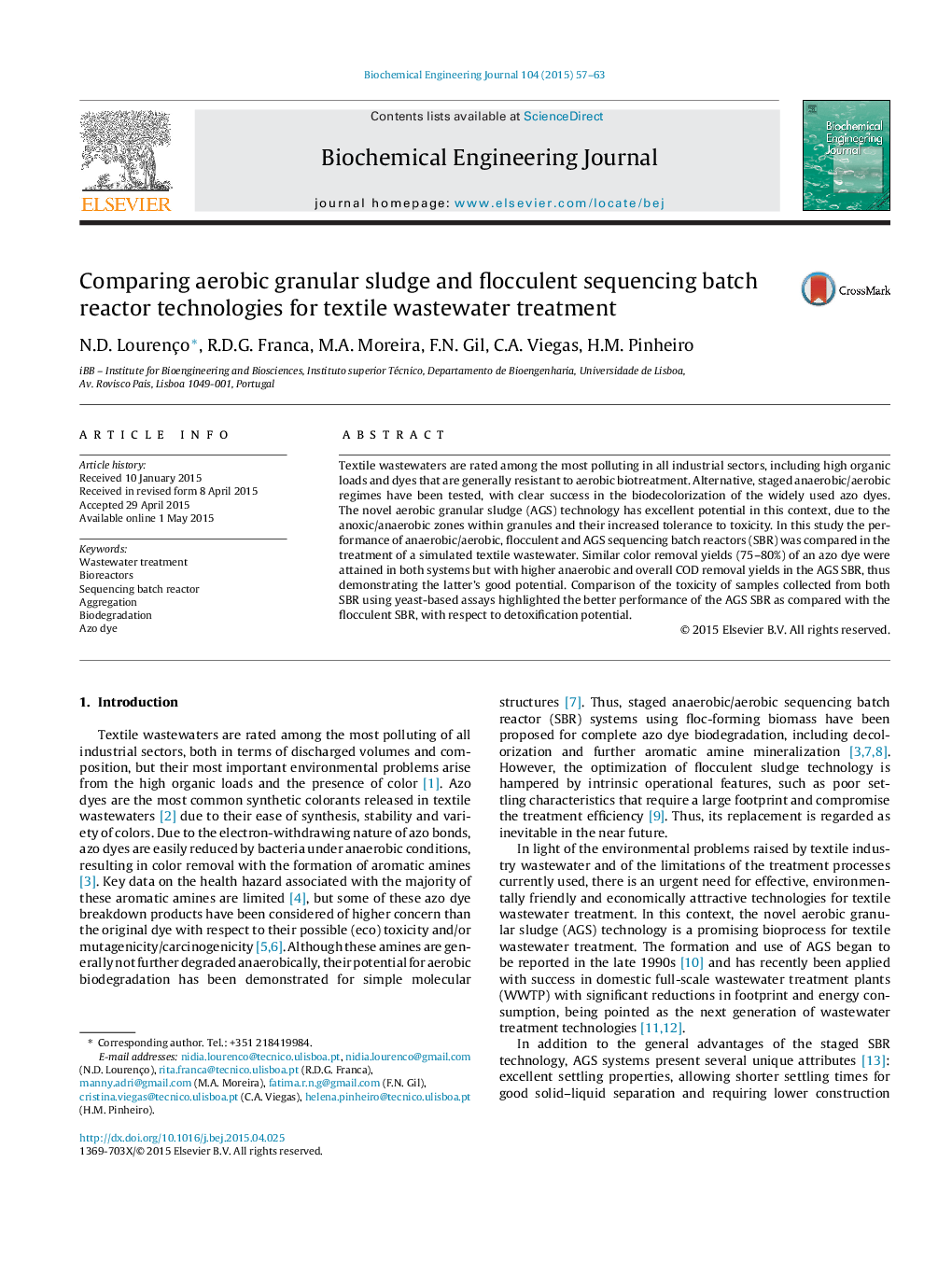| کد مقاله | کد نشریه | سال انتشار | مقاله انگلیسی | نسخه تمام متن |
|---|---|---|---|---|
| 2789 | 135 | 2015 | 7 صفحه PDF | دانلود رایگان |
• Textile wastewater was treated with sludge flocs and aerobic granules (AGS) in SBR.
• Higher anaerobic and overall COD removal yields were observed in the AGS SBR.
• High azo dye decolorization was attained with both flocs and aerobic granules.
• Decolorization products showed higher cyto- and genotoxic potential than original dye.
• AGS had better performance in decolorization product detoxification potential
Textile wastewaters are rated among the most polluting in all industrial sectors, including high organic loads and dyes that are generally resistant to aerobic biotreatment. Alternative, staged anaerobic/aerobic regimes have been tested, with clear success in the biodecolorization of the widely used azo dyes. The novel aerobic granular sludge (AGS) technology has excellent potential in this context, due to the anoxic/anaerobic zones within granules and their increased tolerance to toxicity. In this study the performance of anaerobic/aerobic, flocculent and AGS sequencing batch reactors (SBR) was compared in the treatment of a simulated textile wastewater. Similar color removal yields (75–80%) of an azo dye were attained in both systems but with higher anaerobic and overall COD removal yields in the AGS SBR, thus demonstrating the latter's good potential. Comparison of the toxicity of samples collected from both SBR using yeast-based assays highlighted the better performance of the AGS SBR as compared with the flocculent SBR, with respect to detoxification potential.
Figure optionsDownload as PowerPoint slide
Journal: Biochemical Engineering Journal - Volume 104, 15 December 2015, Pages 57–63
